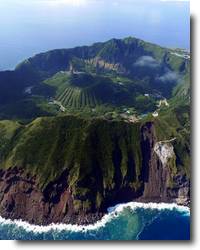GEISHAS
GEISHAS - a profession in decline . Many find that geishas are prostitutes and some were exchanging sex for money. Geisha is a woman trained in the arts , dance, music and entertainment. Geisha means " person living arts ." She spends years learning to play various musical instruments , dance and be the hostess and confidant. And they pay good money to have a Geisha meeting all your requests.
Stages of training[edit]
Traditionally, Geisha began their training at a young age. Some girls were bonded to geisha houses (okiya) as children. These girls were referred to as hangyoku and were as young as nine years old. This was not a common practice in reputable districts and disappeared in the 1950s with the outlawing of child labor.[6] Daughters of geisha were often brought up as geisha themselves, usually as the successor (atotori, meaning "heir" or "heiress" in this particular situation) or daughter-role (musume-bun) to the okiya.
A maiko is an apprentice and is therefore bonded under a contract to her okiya. The okiya supplies her with food, board, kimonos, obis, and other tools of her trade. Her training is very expensive,[32] and her debt must be repaid to the okiya with the earnings she makes. This repayment may continue after the maiko becomes a full-fledged geisha and only when her debts are settled is she permitted to move out to live and work independently.[6]
A maiko will start her formal training on the job as a minarai, which literally means "learning by watching". Before she can do this she must find an onee-san ("older sister": an older geisha acting as her mentor). It is the onee-san's responsibility to bring her to the ozashiki (お座敷, a banquet in any traditional Japanese building with tatami), to sit and observe as the onee-sanis at work. This is a way in which she will gain insights of the job, and seek out potential clients. Although minarai attend ozashiki, they do not participate at an advanced level. Their kimono, more elaborate than a geiko's, are intended to do the talking for them. Minarai can be hired for parties but are usually uninvited (yet welcomed) guests at parties that their onee-sanattends. They only charge a third of the usual fee. Minarai generally work with a particular tea house (minarai-jaya) learning from the okaa-san (literally "mother," the proprietress of the house). From her, they would learn techniques such as conversation and gaming, which would not be taught to them in school. This stage lasts only about a month or so.[33]
After a short period the final stage of training begins, and the students are now called "maiko", rather than minarai. Maiko (literally "dance girl") are apprentice geisha, and this stage can last for years. Maiko learn from their senior geisha mentor and follow them to all their engagements. The onee-san and imouto-san (senior/junior, literally "older sister/younger sister") relationship is important. The onee-san teaches her maiko everything about working in the hanamachi. The onee-san will teach her proper ways of serving tea, playing shamisen, dancing, casual conversation and more. The onee-san will even help pick the maiko's new professional name with kanji or symbols related to her name.
There are three major elements of a maiko's training. The first is the formal arts training. This takes place in special geisha schools which are found in every hanamachi. The second element is the entertainment training which the maiko learns at various teahouses and parties by observing her onee-san. The third is the social skill of navigating the complex social web of the hanamachi. This is done on the streets. Formal greetings, gifts, and visits are key parts of any social structure in Japan and for a maiko, they are crucial for her to build the support network she needs to survive as a geisha.[6]
Maiko are considered one of the great sights of Japanese tourism, and look very different from fully qualified geisha. They are at the peak of traditional Japanese femininity. The scarlet-fringed collar of a maiko's kimono hangs very loosely in the back to accentuate the nape of the neck, which is considered a primary erotic area in Japanese sexuality. She wears the same white makeup for her face on her nape, leaving two or sometimes three stripes of bare skin exposed. Her kimono is bright and colorful with an elaborately tied obi hanging down to her ankles. She takes very small steps and wears traditional wooden shoes called okobo which stand nearly ten centimeters high.[6] There are 5 different hairstyles that a maiko wears, that mark the different stages of her apprenticeship. The "Nihongami" hairstyle with "kanzashi" hair-ornamentation strips is most closely associated with maiko,[34] who spend hours each week at the hairdresser and sleep on holed-pillows to preserve the elaborate styling.[35] Maiko can develop a bald spot on their crown caused by rubbing from Kanzashi strips and tugging in hairdressing. This was associated with the maiko's womanhood, as it came from a pulled knot in the ofuku hairstyle that a maiko would wear after her mizuage or first sexual experience (before which, the maiden wareshinobu style was worn).[36]
Around the age of 20–22, the maiko is promoted to a full-fledged geisha in a ceremony called erikae (turning of the collar).[20][37] This could happen after two to five years of her life as a maiko or hangyoku, depending on at what age she debuted. She now charges full price for her time. Geisha remain as such until they retire.
Traditionally, Geisha began their training at a young age. Some girls were bonded to geisha houses (okiya) as children. These girls were referred to as hangyoku and were as young as nine years old. This was not a common practice in reputable districts and disappeared in the 1950s with the outlawing of child labor.[6] Daughters of geisha were often brought up as geisha themselves, usually as the successor (atotori, meaning "heir" or "heiress" in this particular situation) or daughter-role (musume-bun) to the okiya.
A maiko is an apprentice and is therefore bonded under a contract to her okiya. The okiya supplies her with food, board, kimonos, obis, and other tools of her trade. Her training is very expensive,[32] and her debt must be repaid to the okiya with the earnings she makes. This repayment may continue after the maiko becomes a full-fledged geisha and only when her debts are settled is she permitted to move out to live and work independently.[6]
A maiko will start her formal training on the job as a minarai, which literally means "learning by watching". Before she can do this she must find an onee-san ("older sister": an older geisha acting as her mentor). It is the onee-san's responsibility to bring her to the ozashiki (お座敷, a banquet in any traditional Japanese building with tatami), to sit and observe as the onee-sanis at work. This is a way in which she will gain insights of the job, and seek out potential clients. Although minarai attend ozashiki, they do not participate at an advanced level. Their kimono, more elaborate than a geiko's, are intended to do the talking for them. Minarai can be hired for parties but are usually uninvited (yet welcomed) guests at parties that their onee-sanattends. They only charge a third of the usual fee. Minarai generally work with a particular tea house (minarai-jaya) learning from the okaa-san (literally "mother," the proprietress of the house). From her, they would learn techniques such as conversation and gaming, which would not be taught to them in school. This stage lasts only about a month or so.[33]
After a short period the final stage of training begins, and the students are now called "maiko", rather than minarai. Maiko (literally "dance girl") are apprentice geisha, and this stage can last for years. Maiko learn from their senior geisha mentor and follow them to all their engagements. The onee-san and imouto-san (senior/junior, literally "older sister/younger sister") relationship is important. The onee-san teaches her maiko everything about working in the hanamachi. The onee-san will teach her proper ways of serving tea, playing shamisen, dancing, casual conversation and more. The onee-san will even help pick the maiko's new professional name with kanji or symbols related to her name.
There are three major elements of a maiko's training. The first is the formal arts training. This takes place in special geisha schools which are found in every hanamachi. The second element is the entertainment training which the maiko learns at various teahouses and parties by observing her onee-san. The third is the social skill of navigating the complex social web of the hanamachi. This is done on the streets. Formal greetings, gifts, and visits are key parts of any social structure in Japan and for a maiko, they are crucial for her to build the support network she needs to survive as a geisha.[6]
Maiko are considered one of the great sights of Japanese tourism, and look very different from fully qualified geisha. They are at the peak of traditional Japanese femininity. The scarlet-fringed collar of a maiko's kimono hangs very loosely in the back to accentuate the nape of the neck, which is considered a primary erotic area in Japanese sexuality. She wears the same white makeup for her face on her nape, leaving two or sometimes three stripes of bare skin exposed. Her kimono is bright and colorful with an elaborately tied obi hanging down to her ankles. She takes very small steps and wears traditional wooden shoes called okobo which stand nearly ten centimeters high.[6] There are 5 different hairstyles that a maiko wears, that mark the different stages of her apprenticeship. The "Nihongami" hairstyle with "kanzashi" hair-ornamentation strips is most closely associated with maiko,[34] who spend hours each week at the hairdresser and sleep on holed-pillows to preserve the elaborate styling.[35] Maiko can develop a bald spot on their crown caused by rubbing from Kanzashi strips and tugging in hairdressing. This was associated with the maiko's womanhood, as it came from a pulled knot in the ofuku hairstyle that a maiko would wear after her mizuage or first sexual experience (before which, the maiden wareshinobu style was worn).[36]
Around the age of 20–22, the maiko is promoted to a full-fledged geisha in a ceremony called erikae (turning of the collar).[20][37] This could happen after two to five years of her life as a maiko or hangyoku, depending on at what age she debuted. She now charges full price for her time. Geisha remain as such until they retire.





